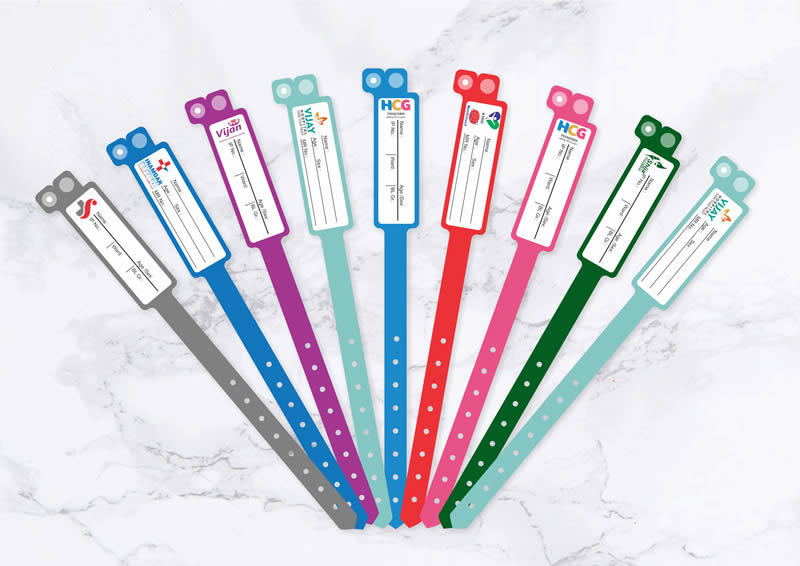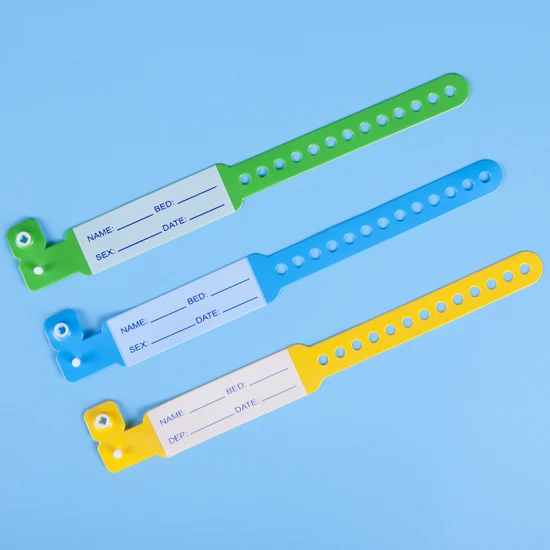The Connection Between a Patient Identification Band and Enhanced Patient Privacy
The Connection Between a Patient Identification Band and Enhanced Patient Privacy
Blog Article
Checking Out the Various Types of Patient Identification Band Used in Medical Facilities
In the elaborate world of health care, the critical function of Patient Identification bands typically goes unnoticed. These bands, differing from easy paper wristbands to sophisticated RFID bands, create the foundation of Patient safety protocols, guaranteeing precision in Patient Identification.
Understanding the Value of Patient Identification Bands
While they may appear like plain devices, Patient Identification bands play an essential duty in clinical centers. These bands function as an essential device for validating Patient identity, protecting against clinical mistakes related to misidentification. The bands usually show vital info such as the Patient's name, age, blood kind, and any well-known allergic reactions. They permit health care professionals to rapidly access this vital details, thereby facilitating timely and exact medical therapy. Patient Identification bands likewise aid in improving administrative jobs, ensuring precise record-keeping and payment. In spite of their simplicity, these bands symbolize the concept of Patient safety and security, a foundation of quality healthcare. Without them, the threat of medical mistakes, and consequently, Patient injury, could significantly increase.
Traditional Paper Wristbands: Their Usage and Limitations
Typical paper wristbands have actually been a staple in Patient Identification throughout various medical centers. While their use prevails, they nurture particular constraints that might impact their performance in Patient monitoring. This area will certainly concentrate on the scope of their application and the intrinsic drawbacks connected with their usage.
Paper Wristbands: Use Extent
In the realm of Patient Identification, paper wristbands have actually long held a critical duty. These bands are generally used in outpatient settings, where the Patient's remain is short-term. Regardless of developments in technology, the humble paper wristband continues to be a economical and dependable solution for Patient Identification in various medical care situations.
Limitations of Paper Wristbands
In spite of their prevalent use, paper wristbands are not without their downsides. In enhancement, paper wristbands usually do not have the technological capacities of even more contemporary options, such as barcoding or RFID chips, limiting their performance to just displaying composed details. Paper wristbands can cause discomfort or skin inflammation to some clients, particularly when put on for extensive periods.
Barcoded Wristbands: Innovations in Patient Identification
While Patient Identification has long been an essential aspect of health care, the introduction of barcoded wristbands signifies a substantial jump forward. These bands utilize the simplicity of barcoding innovation, enabling for Patient info to be quickly scanned and accessed. They boost the rate and accuracy of Patient Identification, decreasing the threat of medical mistakes associated to misidentification.
Superhigh Frequency Identification (RFID) Bands: a Step Towards Futuristic Health Care
The advancement of Patient Identification bands has actually produced the emergence of Radio Frequency Identification (RFID) Bands (patient identification band). These innovative devices existing key advantages for healthcare facilities, supplying an extra effective and technically progressed ways of Patient Identification. The application of RFID in medical care is a considerable action in the direction of an extra advanced method to Patient administration and safety
Recognizing RFID Bands

RFID Bands: Key Benefits
Largely, these bands enhance Patient safety by offering precise, instant Identification, thus lowering medical errors. RFID bands can keep a vast amount of Patient information, including clinical history and allergies, allowing customized care. On the whole, RFID bands stand for a considerable advancement in Patient Resources Identification modern technology, profiting both individuals and healthcare service providers.
Applying RFID in Health Care
As we tip into a highly sophisticated age, the implementation of RFID bands in medical care ends up being increasingly vital. These bands provide a seamless way to track and determine individuals, guaranteeing their safety and security and enhancing performance in therapy procedures. RFID bands use various benefits over standard Identification techniques. They can keep a vast quantity of data, consisting of the Patient's medical background and treatment strategies, which can be quickly accessed by doctor. This information assists medical professionals make educated decisions relating to the Patient's therapy strategy. RFID bands minimize clinical errors by supplying exact Patient Identification, which is important in preventing misdiagnosis or incorrect medicine administration. Therefore, the application of RFID bands is a significant step in the direction of enhancing Patient security and healthcare distribution.

Color-Coded Wristbands: Aiding in Quick and Accurate Medical Diagnosis
In the bustling setting of a clinical center, color-coded wristbands have actually become essential tools for swift and accurate Identification you could try here of a patient's clinical problem. These wristbands, put on by individuals, bring details colors that represent different clinical problems or conditions. Red could indicate allergy threats, while yellow might signify a fall risk. This system is designed to use prompt aesthetic cues to doctor, improving Patient security and care top quality. In emergency situation situations, using these wristbands permits for rapid decision-making. Nonetheless, the performance of color-coded wristbands depends on the harmony of color analysis across medical care institutions, calling for typical standards for regular application.
Strategies for Effective Implementation and Administration of Patient ID Bands
Accomplishing ideal use Patient Identification bands requires a well-structured strategy for their application and administration. The first step involves training all wellness workers on the value of appropriately applying and reading these bands. Secondly, health centers ought to standardize the use of ID bands throughout all divisions, guaranteeing harmony and reducing disparities. Regular audits needs to be performed to confirm adherence to policies and to correct any incongruities. Patient education and learning is additionally important; individuals need to comprehend the objective of the bands and the demand for their consistent wear. patient identification band. Lastly, it's necessary to have a back-up strategy in area, such as barcode scanning or biometrics, to ensure that Patient Identification is never compromised.
Verdict
Patient Identification bands are vital in medical facilities to make sure safety and accuracy. Effective application and monitoring of these bands can significantly minimize clinical errors, increase effectiveness, and enhance general Patient treatment.
These bands, varying from basic paper wristbands to advanced RFID bands, create the foundation of Patient safety and security methods, making sure precision in Patient Identification.The advancement of Patient Identification bands has brought regarding the development of Radio Frequency Identification (RFID) Bands. Overall, RFID bands represent a significant innovation in Patient Identification technology, benefiting both people and healthcare carriers.
RFID bands reduce clinical mistakes by supplying exact Patient Identification, which is critical in stopping misdiagnosis or incorrect medication administration. Patient education is additionally important; people must understand the purpose of the bands and the need for discover this their constant wear.
Report this page